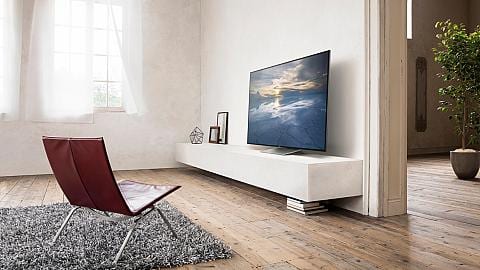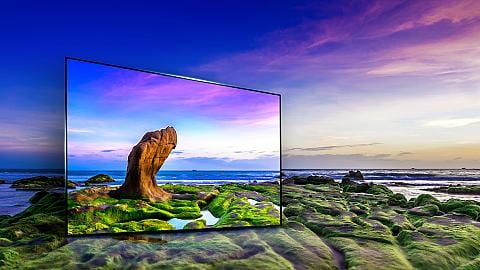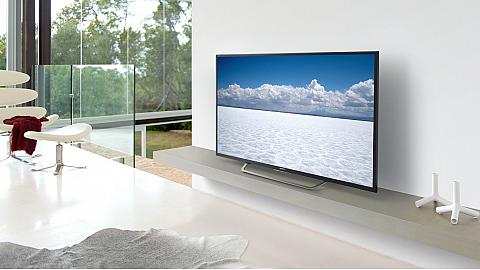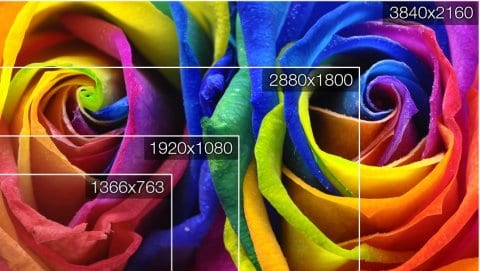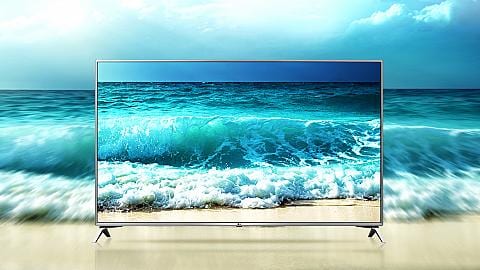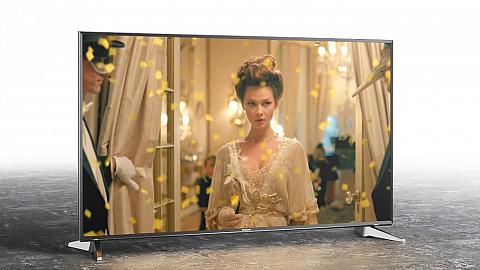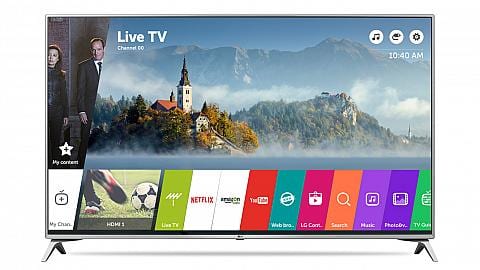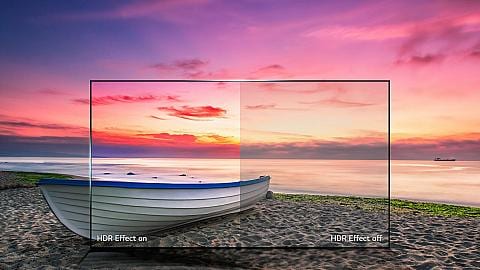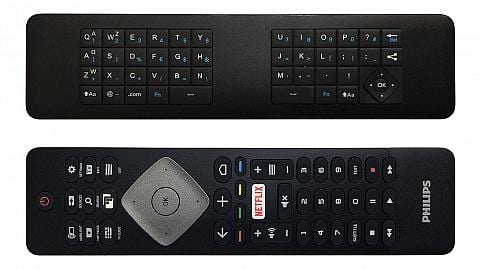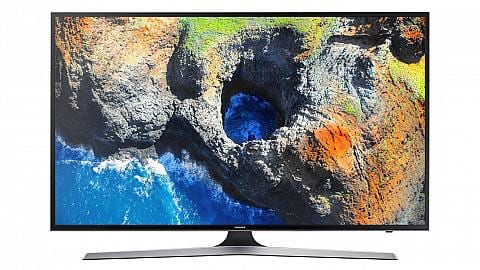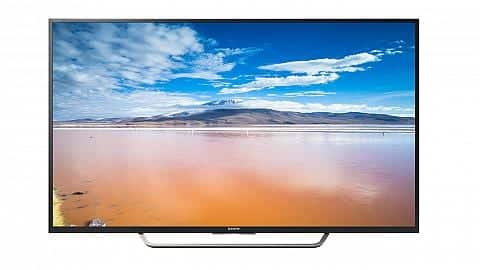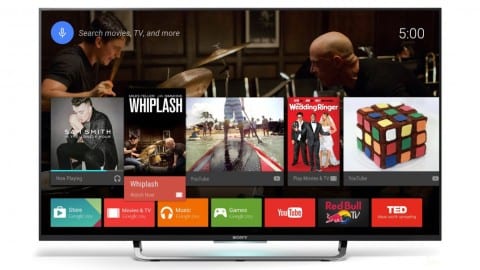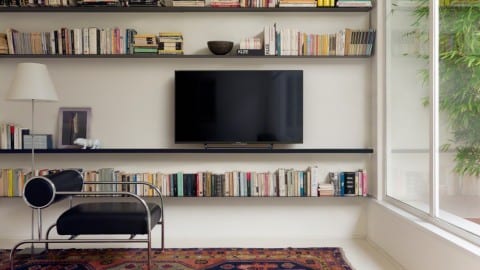Although Christmas is still far away, we want to bring you articles with christmas gift ideas before December. To avoid having to browse them at the last minute, you will be able to follow them on TechVaz.com under Hot Deals category. In the first series of tips, we will look at one of the most exciting and biggest categories of Christmas gifts – TVs.
Page Contents:
This is not going to be any TV, but TVs with the highest resolution on the market, 4K Ultra HD (3,840 x 2,160 px). This is 4x higher resolution than Full HD and comes with many benefits, but one of the biggest is their readiness for the near future.
Among the other and no less important ones are a fine image that can produce (upscale) HD or Full HD resolution virtually all current Ultra HD models. In most cases, features such as brightness, contrast, colour, image frequency, or HD Dynamic Range (HDR) support, a high dynamic range image, are better.
The HDR image is much more colourful than a normal picture, but for many it is artificial. This is because we have been accustomed to watching the SDR (Standard Dynamic Range) image coming from the CRT televisions. However, the HDR image should be a true reality viewer as the content creator saw it. The only drawback is that there is still no uniform standard. That’s why manufacturers are trying to support multiple HDR standards.
Ultra HD TVs are finally coming to terms with the crucial issue that they struggled with in the early years – a lack of content. Every smart TV can connect to the Internet where Ultra HD content is already blessed.
For example, YouTube supports Ultra HD content with HDR. You can also find this highest resolution on Netflix or Amazon Prime Video. There are also a number of Blu-ray players on the market that can handle Ultra HD BDs. They are, however, well overpriced, but they are still cheaper than visiting the multiplex with the whole family and with snacks.
Additionally, we are increasingly experiencing Ultra HD with HDR even in game news. Xbox One S and One X natively support them, the new PlayStation 4 Pro also. By the way, still, the Xbox One S is one of the cheapest Ultra HD BD players on the market. In addition, it will offer more entertainment than an ordinary Ultra HD BD player.
If you only have a “simple” Blu-ray player with Ultra HD support, do not be afraid, every modern Ultra HD TV can handle upscaled image – so you can still watch your full HD movie collection with the original hardware on the new display. Moreover, the higher the source resolution (such as Full HD), the better the result will be on the Ultra HD display.
What to know?
If you have a TV with a diagonal size of 42 inches, do not think that you cannot find this Ultra HD TV. But do not worry about it. The increased ratio of display size and distance from the viewer is past.
Thanks to the fact that the Ultra HD TV has a 4x higher resolution than a Full HD TV or up to 8x higher than HD (HD Ready), you will not get into a bigger display. You can see the pixel with a free eye from a distance of a few dozen centimeters.
So if you have a wall with a TV set 3 meters from your seat, you can also buy a 70 “display. However, as we look at models up to 800 €, the most common diagonal TV is 55 “, which is about 139 cm. It’s just enough for a normal room.
However, if you want an even bigger panel, you’ll also buy 60-65” models in a thousand euros. Just make a decision. But we do not recommend buying curved TVs with a diagonal of less than 70 inches. It does not just matter. In addition, if you are a fan of sports, watching matches with drawn lines on the court or courts, you will greatly impede their unrealistic bending.
The Ultra HD TV is already standard edge LED backlighting, so the two-sided panel backlighting. Occasionally, full (direct) LED backlighting, ie the entire panel with diodes behind the display, appears, but this privilege is more of a flagship than an available model. Edge LED is fully enough, full LED will please.
This is related to the brightness of the display that indicates the brightness of the display when the white color is displayed. It’s a parameter that you do not need to follow in this segment. Most of the better panels have brightness levels of around 500-600 cd / m2, respectively rivets. The higher the brightness value of the panel, the better it is in the brightly lit rooms, respectively where the sun’s light falls sometime during the day.
The so called display contrast is an excellent tool for marketers only (the higher the number, the better). It is about expressing the difference in the darkness of the darkest and lightest shade that is capable of displaying the TV. In this parameter, however, we recognize two variables.
The contrast ratio may be static and dynamic. Static is just the one you are looking for, usually around 1,000 – 1 or higher. There is also a dynamic marketing contrast where the manufacturer does not have the problem to write 1,000,000 – 1, but nothing but a huge number tells you.
As far as panel speed is concerned, the practice is at least a 60 Hz panel. Of course, the higher, the better, but it does not have to overdo it. 60-120 Hz panels are sufficient to watch movies and regular TV broadcasts.
3D is dead. Do not look for it in the specifications of the TVs. By the time it comes to the fore, virtual reality is a 3D music of the past, which no one has ever really used. We mean not only users but also content creators. Likewise, webcams have disappeared from the televisions, which no one even used.
As for the UHD TV equipment, we must say that you will miss nothing. Each TV in the selection has at least a few HDMI ports, ideally with version 2.0 and support for HDCP 2.2.
HDCP 2.2
High-bandwidth Digital Content Protection 2.2 is responsible for hardware protection of video content from any official source (Blu-ray, VOD, satellite, cable). If your TV or player does not support this standard, it will not handle the protected content. So if you are planning to purchase an Ultra HD TV, be sure to include this standard in HDMI, DVI, or other connectors. The same applies to home theaters, Blu-ray players, etc. HDCP 2.2 is not compatible with older versions of HDCP, which can cause many wrinkles. However, manufacturers are aware of this problem and the leading ones do not forget about it.
Other connectors, such as optical and analog audio output, USB ports (search for as much USB 3.0 as possible) or DVB (all versions 2) DVB tuners of all standards (T, S, C) are commonplace. Do not wait for the SCART connector but there are reductions.
Of course, wireless Wi-Fi is available wirelessly, as well as a Bluetooth module or NFC chip for faster pairing with mobile devices, but only for selected models.
Wi-Fi is the standard of screen mirroring the mobile device through Direct Wi-Fi or Miracast. DLNA is also a matter of course, WiDi Interactive and AirPlay do not even offer top-end models. Android TVs have a bit more – Chromecast.
Modern smart TVs have long gone into operating systems that are no longer so closed and, above all, are much faster than their own. Sony and Philips are working on Android TV, Panasonic works with Firefox, Samsung builds on Tizen OS and LG has a Web OS.
All these systems have greater compatibility with connected devices, easier and more user-friendly user interface and, above all, higher speed.
The deficiency still has a problem with an internet browser or YouTube app. Watching websites on the TV sounds great, but the slow pace of working with them quickly makes you feel tired. The same applies to YouTube or Vimeo searches. The software QWERTY keyboard is like a punishment.
Here comes a smartphone, which either through a native application or a mirror of the screen does this job faster. Still, this is not an ideal solution because you must keep your mobile or tablet still.
The equipment cherry, but in the case of Philips, An Ambilight system that illuminates your TV space and optically enhances the image.
In terms of consumption, the 55 “Ultra HD TV has around 120-180 W, which is about 150-200 kWh per year depending on the TV viewing time. Likewise, a large Full HD TV consumes around 70 watts, with an annual consumption of around 110 kWh. Of course, it depends on the manufacturer and the type of panel.
40-90 kWh is not that much difference, but if you watch UHD TV more often than is possible, consumption will still rise. On the other hand, a few dozen kWh more than a year does not ruin anyone.
After the soundtrack, the TVs never excel, although bright exceptions are found. Not in this price category. For normal TV broadcasting, 20-30 watts of power from relatively small stereo speakers is enough, but you will not enjoy the movie. Spice up the stories about the wide range of surround sounds, so the TV needs a lot more speakers and “box” locations.
If you want to get the best out of movies, videos or music, you can get a good 2.1ch system or invest in a 5.1ch soundbar, ideally with a wireless subwoofer. For years, you would not want to pull the cables across the living room. There are several systems on the market right now, you just have to choose. A high-quality system does not have to exceed the price of a TV, conveniently buy from about 200-300 €.
Summary:
- Do not be afraid of Ultra HD resolution, the content is coming in
- do not buy smaller than 50-inch diagonals, they are also suitable for small living rooms
- Do not buy curved TVs, in diagonals below 70 “do not matter
- if money does not play, buy a 70 “TV
- edge LED backlighting is the basis, the full LED will please but the eye more
- look for at least 100 Hz TVs, action scenes will be smoother
- 3D is a thing of the past, do not look for it at all
- the more cd / m² (brightness), the better
- USB 3.0 with Ultra HD is required
- in this price category do not expect premium sound, you’d better buy at least a soundbar under the TV with an external subwoofer
- Wi-Fi is commonplace on all brands as well as the Ethernet port
Best of 800 € TVs
In order for the new TV not to wipe your wallet, we chose models up to € 800. This is an officially stated price for manufacturers, and you can buy them even cheaper on the internet.
But be aware that the TV may go wrong and will have to complain. If you do not know directly that it can be claimed by an authorized manufacturer’s service department, you will have to rely on the e-shop where you purchased it. And there can be a big problem here. The amount of e-shops has foreign headquarters for which the product needs to be delivered. At your own expense. You do not even want to know how much a courier or postage cost 20-25 kg of TV in the Czech Republic or Hungary … On the other hand, as it says – “risk is a profit”. It’s up to you, we can only advise you.
If you happen to have shot a cheap Ultra HD TV at one of the supermarkets, you’d rather be around. It is a very direct TV from China, where it does not look very good for quality in terms of processing or image.
This year, under the tree, you can enjoy several interesting models from world manufacturers. While Ultra HD TVs cost up to € 1,000 a year ago , you can buy them even cheaper today at around $ 800.
LG 55UJ6517
779,00 €
Why Buy?
This year’s lower series model from LG has as its only 55 “IPS LCD panel (100 Hz), of course, with a resolution of 3,840 x 2,160 px. In addition, it offers Active HDR, supports both HDR10 and HLG standards, and when the HDR10 image source is not HDR, the TV adds HDR Effect contrast.
The new Edge LED will also be pleased with the backlight and features such as Ultra Luminance and Local Diming for the best work with backlighting and black coloring. The operating system is webOS 3.5, the newest, most recent, easy-to-use system. Supplied with remote control with Netflix button. Wire is WiDi support, but Wi-Fi and Bluetooth are also missing. The consumption is only 85 W.
Why not buy?
It does not have USB 3.0 ports but only 2 USB 2.0 ports. Does not support Dolby Vision HDR standard, the sound is 20 W and does not support Dolby Atmos. Also missing is NFC and 3.5 mm audio port. The Magic Remote is not a top-of-the-line remote control (but can be purchased).
Panasonic TX-55EX613E
749,00 €
Why Buy?
Also this year’s 55 “diagonal 100 Hz panel and 4K Ultra HD HDR support. Specifically supports HDR10 and HLG standards. Even this novelty is capable of converting the normal image into HDR, but within the limited possibilities of the original image.
4K Pure Direct enhances the source image, including its colors. My Home Screen 2.0 is based on Firefox OS. It is interesting to change the position of the pedestal, it has two forms. No HDMI 3.0 with HDCP 2.2, 3.5 mm audio output or USB 3.0 (1x) and USB 2.0 (1x).
Why not buy?
Dolby Vision HDR support is missing. It has only 2 × 10 W audio. Dolby Vision, Bluetooth, or NFC support is missing. Standard consumption is up to 189 W.
Philips 55PUS6412
799,00 €
Why Buy?
Not even the novelty from Philip (TP Vision) leaves nothing to chance and offers a 55 “panel (100 Hz) with Ultra HD resolution, but with only 350 bits of brightness. A better image is taken by Micro Dimming Pro, Natural Motion and Pixel Plus Ultra HD. The operating system is Android TV (Android 6.0), so you’ll enjoy a lot of apps and games you can get from your smartphone, but not all. However, there are Google Movies, Google Music, and so on. There are 4 HDMI and 2 USB ports, not Wi-Fi
In addition, Ambilight + Hue is the only choice, and a remote control with an integrated QWERTY keyboard on the opposite side. Netflix fans also enjoy the dedicated button for quick launch. Consumption is also decent 85 W.
Why not buy?
Again only 2x 10W stereo system, Dolby Atmos support is missing. The manufacturer does not specify the USB standard. Both Bluetooth and NFC are missing. HDR (HDR Plus) is also not specified.
Samsung UE55MU6102 Series 6
799,00 €
Why Buy?
The 55-inch Newcomer from the South Korean manufacturer offers a 100 Hz panel, HDR (unspecified standard) and Ultra HD resolution. The delicacy is One Connect, a box to which you connect all peripherals. Thanks to this, only two cables – the One Connect and the mains – come to the TV.
Image enhancements are powered by technologies such as PurColor, UHD Dimming, Mega Contrast, and Dynamic Crystal Color. Enjoy a simple remote control with voice control or a sophisticated Smart View smartphone app. It’s also handy for automatic recognition of connected devices.
Why not buy?
20 W stereo, Dolby Atmos or NFC support is missing. The manufacturer does not specify a supported HDR standard and no pair of USB ports. Also missing is 3.5 mm audio output or PiP function. Consumption of the TV is up to 205 W.
Sony Bravia KD-55XD7005
799,00 €
Why Buy?
By the coincidence, the model we recommended last year fell to a decent amount. The 55 “display uses Direct LED backlight, 4K X-Reality PRO technology, Live Color enhancement, and Motionflow XR. There are no HDMI ports with HDCP 2.2, 3 USB ports or a 3.5mm audio port to which you can connect a subwoofer.
It uses both Wi-Fi and Ethernet to connect to the Internet. Enjoy the Bluetooth module as well. The operating system is Android TV (Android 6.0) with voice control and search. Android Chromecast is also built-in for comfortable pairing with a smartphone, tablet, or laptop.
Why not buy?
NFC and Dolby Atmos are missing. Unspecified HDR and USB standards. 2x 10W audio. The display has only a 50 Hz refresh rate. Consumption is up to 184 W.
Some brands in some part of the world either do not offer the required features (Ultra HD up to 800 €), or they are simply not recommended. Turkish, Chinese, or other manufacturers are already saving at first glance. A TV with a cost of around € 700-800 is not a smartphone that you will exchange for two years at the operator. It should last longer.
We do not give a hand to these models, but we know from experience that renowned brands have much better processing, better components and a sophisticated user interface. We believe that the five models from the five major manufacturers of decision-making TVs are enough and we’ve been making some choices easier.
